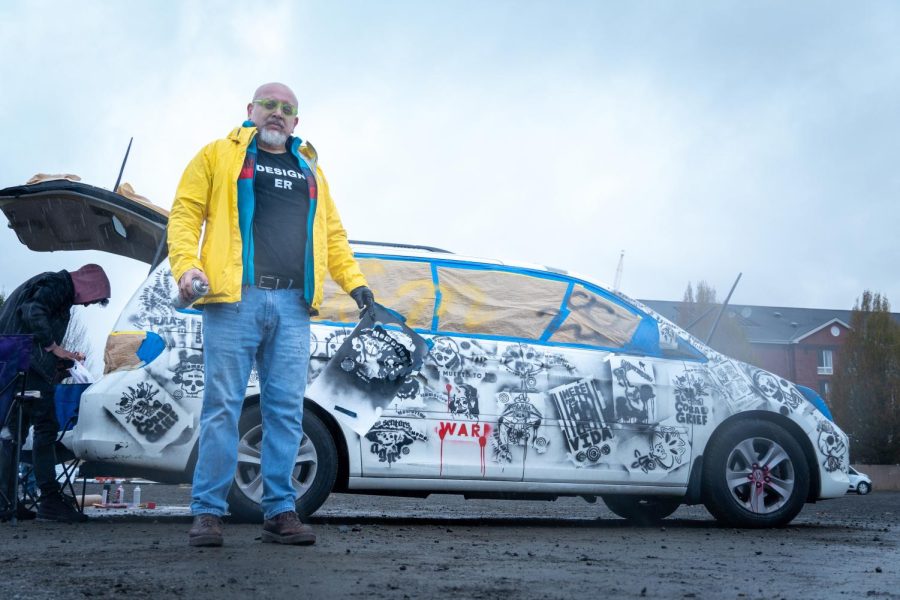Guido Alvarez
Guido: This is the third version of it. First one was when I was working with St. Olaf College in Minnesota, and I did it with chalk paint. So we did it. I covered my car with chalk paint and then they did it with chalk. Kind of that was the first version I said, ‘now that’s not strong enough,’ you know? It’s nice because you can change the design and be safe with it. But then I moved into Banksy and then I moved in through street art. But the problem is that I’m not a muralist whatsoever. It is not a mural class or painting of that nature. So I do like to take advantage of that. What I see is a need in you guys [students] and young people to express themselves in ways besides the structure or outside the structure. So, this project is, from my point of view, a good balance between the two – it’s really ‘not let’s go and wreck the walls,’ just for the sake of it and experience. So I had to put myself into it. And by that I mean my car. I mean we couldn’t do it. You couldn’t get any car or anything like that. So the first time I did this was in St. Cloud State University we did graffiti you know what I mean? As opposed to structure, graphic design reads and layout. What I like about Banksy, or street artists, is that in between – not finite – is no graphic design. So that is like the cool part of it. So that is where it’s coming from. On that side of the technical side of your mind. But, then there is the interesting aspect of the cultural side. So because when I moved to Oregon, I discovered that we are pretty much living in two countries at the same time for sure, you know, Mexico and the United States. I don’t know who wins. You know, it’s kind of a battle between the two. So you get to know both countries at the same time and then get to know that people are all the time speaking in Spanish and the other was muertos. So every year I do it in a different way. Like last year in Jamaica, we did it with posters about the invasion of the Spaniards in America and whatnot. So I did that last year. We did posters, and I was meaning to do it in a car but I ran out of time so these times I said ‘oh, that’s a nice way to make the other Los Muertos be part of it.’ And then this goes and the ban and you know, the graffiti the resistance part.
Jacob Fischer: This is the first time it’s had a cultural connection, right?
Guido: The first time yes, yes. And that’s I mean, that is a specific sense. Yes. We have this specific reference to Posada you know, as a designer, who was complaining about society and what the things that he saw were problematic. So what I’ve seen over and over and over, is that you guys, young people, I mean, you – you have a lot of things to say but you do it just among yourselves in your view as opposed to having something to say because that’s one of the issues with education; it’s hard to have you guys speak whatever you feel like. So this is kind of a way to do that. But as you can see, there’s still of course a lot of withholding. You know, they don’t want to share. ‘We got to do it right. Where’s my A? Where’s my structure? I need to see exactly the schedule,’ and so on and so forth. As I mentioned in class, I know that there’s a lot of people pissed because it’s not structured, but I’m fine with it. I’m sure that they will forget about me many years later, but they won’t forget about the project itself.

